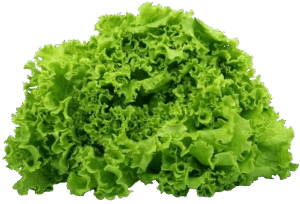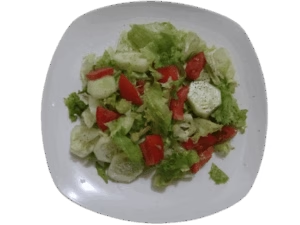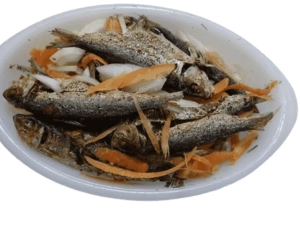TABLE OF CONTENTS
Let’s face it, sometimes going to the gym can feel like a hassle. In addition, the extra cost may add to some of our already burdensome budgets. As such, having an exercise routine that extends beyond the gym is an excellent and wise alternative. Especially for those who are on a weight loss or fitness journey.
In this article, we will be discussing some exercises that you can do in the comfort of your home to maintain a fitness lifestyle. You can also incorporate these exercises into your fitness routine for both targeted workouts as well as the intent of impacting all the various muscle groups for a total body workout. Let’s discuss!
You can learn about how to create a fitness routine here.
The Discussion
Exercise is an important part of any lifestyle and several pieces of research can contend with this narrative. Research has also shown that a linear relationship exists between physical activity and one’s health status. As such, the more physically active you are, the more it can lead to additional improvements in one’s health status (Warburton et. al., 2006).
On the other hand, physical inactivity has been noted as a risk factor for many diseases including cardiovascular diseases, diabetes, and even arthritic conditions such as osteoporosis and osteoarthritis (Bouchard and Shepard, 1994; Blair and Brodney, 1991; American College of Sports Medicine, 1998). You can read more on exercise and its benefits in this post.
Additionally, routine physical activity has been associated with an improvement in one’s psychological well-being. As such, regular exercise has been found to help with managing stress, anxiety and even depression (Warburton et. al., 2001; Dunn et al., 2001). You can read more on exercise and its benefits to one’s mental health here:
While most of us are familiar with some of the benefits of regular physical activity, finding time to carry out these activities or even going to the gym, can be challenging. But one of the things that I have learnt from the pandemic is that most of life’s seemingly burdensome activities can be done at home, and exercising is simply one of them.
Moreover, with the advancement of technology and a plethora of exercise apps and online videos, this can become more of a reality. So, what if we do not have access to some of these services or better yet just want to incorporate some movements that can impact our body and lessen our budgets? Well, this post is for you.
In this article, we will be discussing five (5) exercises that you can do at home to strengthen and tone the entire body, plus, help with weight loss with an appropriate diet. The exercises that will be discussed include squats, planks, pilates, running and walking.
Five (5) Exercises to strengthen and tone the body at home:
- Squats
- Planks
- Pilates
- Running
- Walking
Benefits of Squats
The squat is said to be one of the most popular exercises, especially in the area of strength and conditioning of the body. Due to the fact that it is similar to many different athletic movements, it is often included in workout routines as a lower body or core exercise, particularly as it relates to the enhancement of athletic performance (Escamilla, et al., 2001a; Senter & Hame, 2006). Additionally, it is largely regarded as a test of one’s lower body strength, and as such, it is usually a significant component of competitive weightlifting (Escamilla, 2001, Escamilla, et al., 2001b).
Another major benefit of performing squats includes the recruiting of several muscle groups in just one attempt, especially when done properly (Fry et. al. 2003). It is also used in clinical settings to connect tissues after injuries involving the joints (Dahlkvist et. al. 1982) – It is also said to be able to improve one’s overall quality of life, due to its ability to impact multiple muscle groups when performed (Fry et. al. 2003).
You can read more on squatting in this article as well as here, which includes its many benefits and how to do it (as seen in the illustrative summary of the article).
- Five (5) best exercises to tone and strengthen the thighs at home
- What are the Gluteus Muscles (Glutes)? – Five (5) Exercises to tone, strengthen and shape them!
Benefits of the Plank Exercise
The plank exercise is designed to use body weight to resist gravity. The exercise is infamous for strengthening the core muscles and conditioning and strengthening the entire body.
The plank, like crunches and bridges, is considered as an exercise to strengthen the core muscle (Ekstrom et. al., 2007). A strong core muscle can help to prevent injuries in many activities, particularly sports. As such, if the core muscles are weak, then that can cause configuration issues for the body as well as affect the posterior joints of the lumbar spine (Kline et. al. 2013).
Research contents that the plank exercise can be performed on many different surfaces and can impact multiple joints (Do YC, and Yoo, 2015). As such, the plank exercise can activate and strengthen the muscles of the core and improve posture as well as flexibility. You can read the detailed article on plank here. In this article, you will learn more about its benefits as well as how to do it.
You can also download your free plank challenge here.
- The mighty plank – One exercise, many benefits – Here are five (5) reasons to add it to your exercise routine.
- Plank it! – 30 days plank challenge.
Benefits of the Pilates
Pilates is a mind-body exercise like yoga, that was developed by Joseph Pilates to strengthen his sickly body (Kloubec, 2011). The exercise is famously practised by many, particularly as it relates to core strength and stability. Pilates exercise focuses on what is called the five (5) essentials. These five (5) essentials include breathing, cervical alignment, rib and scapular stabilization, pelvic mobility and the utilization of the abdominis (Stott Pilates, 2001).
Studies have shown that this muscle (transversus abdominis) as well as the oblique muscles are key muscles for persons with low back pain (Suzuki et. al., 1995; Axler and McGill, 1997). As such, the practising of Pilates could help in the relief or management of back pain. Other benefits of Pilates include helping with posture, and increasing flexibility as well as circulation. You can read more about Pilates and its benefits in this detailed post.
Benefits of the Running
Running is a form of physical activity that can be done at home. So, as long as it is safe to do so, you can incorporate running into your fitness journey. Research contends that just ten (10) minutes of running per day for more or less than six (6) miles or less per hour, can reduce one’s risk of death from cardiovascular diseases and this includes all genders (Lee et al., 2014).
Like walking, running can provide cardiovascular and weight management benefits. However, research suggests that running can burn more calories (Lee, 2011). Other benefits of running include improving one’s blood pressure, insulin sensitivity and blood lipid profiles (Kraus et al. 2002; Whelton et al., 2002).
You can read the detailed article on running and its health benefits here. In this article, you will also learn how to include running in your fitness routine for weight loss.
Benefits of the Walking
Like running, walking is a form of exercise or physical activity that can be done at home, as long as it is safe to do so. As such, I incorporate both walking and running into my fitness plan to take away any element of monotony from my weekly fitness routine.
Research has shown that walking can help with weight loss, improve cardiovascular health, improve blood pressure and blood sugar as well as bone mineral density (Erickson et al., 2010). You can read more about walking in this detailed article. In this article, you will also learn more about the benefits of walking as well as how to incorporate it into your fitness routine, especially for weight loss.
Illustrative Summary
Here is an illustrative summary of the five (5) Best Exercises to do at home to STRENGTHEN and TONE the entire BODY.
Let’s Sum Up!
Nowadays, with the advancement of technology and the knowledge that is available when it comes to being fit, we certainly do not have any excuse to not workout. We just have to purposely add some form of physical or exercise routine to our wellness journey, as physical activity is crucial to one’s overall health and well-being. But sometimes, going to the gym might be challenging or a constraint, budgetary-wise.
As such, in this article we have outlined five (5) exercises that you can incorporate into your fitness routine, to help keep you on track and burn those calories, while strengthening and toning the entire body. Plus, these exercises can be done in the comfort of your own home. Some of the exercises discussed include squatting, Pilates and running.
The article also provides links to other posts that can help you develop a fitness routine that meets your lifestyle. So, we make it easy for you to start as well as maintain your fitness journey. Why, because we are all in this together!
So, have you performed any of these exercises before? Share it nuh!
You can read more on exercising and its benefits as well as other exercises that can help you to lose weight, tone and strengthen the abs as well as start your fitness programme. Visit the posts below:
Editor’s Note: Article updated on July 9, 2024.
- American College of Sports Medicine. Position Stand: the recommended quantity and quality of exercise for developing and maintaining cardiorespiratory and muscular fitness, and flexibility in healthy adults. Med Sci Sports Exerc. 1998;30(6):975–9.
- Axler CT, McGill SM. Low back loads over a variety of abdominal exercises: searching for the safest abdominal challenge. Med Sci Sports Exerc. 1997;29: 804-810.
- Blair SN, Brodney S. Effects of physical inactivity and obesity on morbidity and mortality: current evidence and research issues. Med Sci Sports Exerc 1999;31:S646-62.
- Bouchard C, Shephard RJ. Physical activity fitness and health: the model and key concepts. In: Bouchard C, Shephard RJ, Stephens T, editors. Physical activity fitness and health: International proceedings and consensus statement. Champaign (IL): Human Kinetics; 1994. p. 77-88.
- Dahlkvist, NJ, Mayo, P, and Seedhom, BB. Forces during squatting and rising from a deep squat. Eng Med 11: 69–76, 1982.
- Do YC, Yoo WG. Comparison of the thicknesses of the transversus abdominis and internal abdominal obliques during plank exercises on different support surfaces. J Phys Ther Sci 2015;27: 169-70.
- Dunn AL, Trivedi MH, O’Neal HA. Physical activity dose–response effects on outcomes of depression and anxiety. [discussion 609-10]. Med Sci Sports Exerc 2001;33:S587-97.
- Ekstrom RA, Donatelli RA, Carp KC. Electromyographic analysis of core trunk, hip, and thigh muscles during 9 rehabilitation exercises. J Orthop Sports Phys Ther 2007;37:754-62.
- K.I. Erickson, C.A. Raji, O.L. Lopez, J.T. Becker, C. Rosano, A.B.Newman, H.M. Gach, P.M. Thompson, A.J. Ho, L.H. Kuller (2010). Physical activity predicts gray matter volume in late adulthood. Neurology Oct 2010, 75 (16) 1415-1422; DOI:10.1212/WNL.0b013e3181f88359
- https://n.neurology.org/content/75/16/1415.long.
- Escamilla, RF. Knee biomechanics of the dynamic squat exercise. Med Sci Sports Exerc 33: 127–141, 2001.
- Escamilla, RF, Fleisig, GS, Zheng, N, Lander, JE, Barrentine, SW, Andrews, JR, Bergemann, BW, and Moorman, CT. Effects of technique variations on knee biomechanics during the squat and leg press. Med Sci Sports Exerc 33: 1552–1566, 2001a.
- Escamilla, RF, Fleisig, GS, Lowry, TM, Barrentine, SW, and Andrews, JR. A three-dimensional biomechanical analysis of the squat during varying stance widths. Med Sci Sports Exerc 33: 984–998, 2001b.
- Fry, AC, Smith, JC, and Schilling, BK. Effect of knee position on hip and knee torques during the barbell squat. J Strength Cond Res 17: 629–633, 2003.
- Kline JB, Krauss JR, Maher SF, Qu X. Core strength training using a combination of home exercises and a dynamic sling system for the management of low back pain in pre-professional ballet dancers: a case series. J Dance Med Sci 2013;17:24-33.
- Kloubec J. Pilates: how does it work and who needs it? Muscles Ligaments Tendons J. 2011 Dec 29;1(2):61-6. PMID: 23738249; PMCID: PMC3666467.
- Kraus WE, Houmard JA, Duscha BD, et al. Effects of the amount and intensity of exercise on plasma lipoproteins. N Engl J Med. 2002; 347:1483–92. [PubMed: 12421890]
- Lee DC, Sui X, Ortega FB, et al. Comparisons of leisure-time physical activity and cardiorespiratory fitness as predictors of all-cause mortality in men and women. Br J Sports Med. 2011; 45:504–10.
- Lee, D, Pate, R, Lavie C, Sui, X, Church, T.S, Blair, S.N (2014). Leisure-Time Running Reduces All-Cause and Cardiovascular Mortality Risk. J Am Coll Cardiol. 64(5): 472–481. doi:10.1016/j.jacc.2014.04.058.
- Senter, C and Hame, SL. Biomechanical analysis of tibial torque and knee flexion angle: Implications for understanding knee injury. Sports Med 36: 635–641, 2006.
- Stott Pilates. Comprehensive Matwork. Toronto: Merrithew Corporation; 2001.
- Suzuki S, Sata M, Okubo T. Expiratory muscle training and sensation of respiratory effort during exercise in normal subjects. Thorax. 1995:50:366-370.
- Warburton, D.E, Glendhill, N, Quinney, A. (2001). A musculoskeletal fitness and health. Can J Appl Physiol, 26, 217-37.
- Warburton, D. E, Nicol, C.W. and Bredin, S.D. (2006). Health benefits of physical activity: the evidence. Canadian Medical Association Journal, 174(6), 801-809.
- Whelton SP, Chin A, Xin X, et al. Effect of aerobic exercise on blood pressure: a meta-analysis of randomized, controlled trials. Ann Intern Med. 2002; 136:493–503. [PubMed: 11926784].





